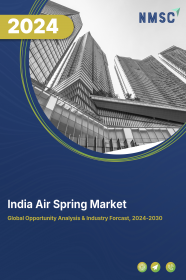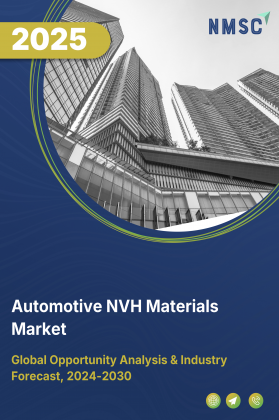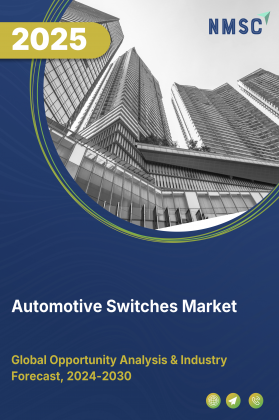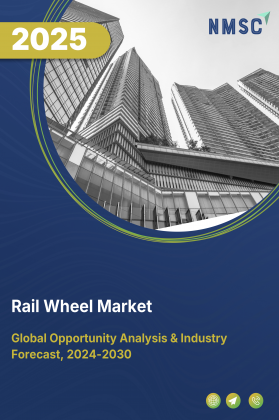
India Air Spring Market Air Spring Market by Type (Rolling Lobe, Sleeve-type, and Others), by Bag Configuration (Single Convolution, and others), by Component (Air Chamber, Airbag, and Others), by Material (Metal Components, and Others), by Technology (Passive (Non-Electronic), and Others), and Others), by Force (Low (<1,500 N/mm), and others), by Sales Channel (Aftermarket, and OEM), by Application (Automotive, and others)– Global Opportunity Analysis and Industry Forecast, 2025–2030.
Industry: Automotive & Transportation | Publish Date: 18-Oct-2025 | No of Pages: 143 | No. of Tables: 146 | No. of Figures: 111 | Format: PDF | Report Code : AT2321
India Air Spring Market Overview
The India Air Spring Market size was valued at USD 373.4 million in 2023, and is predicted to reach USD 649.0 million by 2030, at a CAGR of 7.2% from 2024 to 2030. Also, the air spring market is valued at 2.4 million units in 2023, and is expected to reach at 4.6 million units by 2030 with the CAGR of 8.2% during 2024-2030.
The air spring, also known as air bags or pneumatic springs refers to the industry focused on the production and distribution of these springs, which are components used in vehicle suspension systems to provide improved ride quality, comfort, and stability. It is a component used in commercial vehicles, passenger cars, and industrial machinery.
The component is designed to support loads, isolate vibrations and shocks, and act as a pneumatic cylinder by expanding itself. They are integral components of air suspension systems, providing improved comfort compared to traditional coil springs. These springs replaces traditional metal springs with a flexible, rubber-and-fabric bladder that contains compressed air, making them a popular choice for various applications.
Manufacturing Upsurge and Make-in-India Initiatives Elevate Local Supply
India’s focused drive to enhance domestic production—anchored in Make-in-India and targeted manufacturing incentives—is accelerating local air spring manufacturing. Collaborations between domestic firms and global suspension system providers are enabling the localized production of advanced air spring systems, reducing dependency on imports. This shift is improving availability, optimizing cost structures, and encouraging original equipment manufacturers (OEMs) in the commercial vehicle segment to adopt these technologies more widely.
Technological Elevation: Smart, Sensor-Equipped Air Springs Redefining Performance
The adoption of sensor-integrated and electronically controlled air springs is reshaping industry standards in India. These systems allow real-time monitoring of pressure, temperature, and ride height, supporting predictive maintenance and vehicle safety features. The growing preference for intelligent suspension solutions among premium vehicle makers, public transport agencies, and fleet operators is accelerating the shift toward electronically adaptive air spring systems. This trend aligns with India’s broader movement toward automation, safety, and comfort in transportation.
Limited Standardization Across Vehicle Platforms Restricts Widespread Air Spring Adoption
One of the key challenges facing the India air spring market is the lack of standardization across vehicle platforms, particularly in the commercial and mid-tier passenger vehicle segments. Unlike conventional suspension systems that follow relatively uniform configurations, air spring designs often vary significantly by vehicle model, axle type, and load-bearing requirement. This variation makes it difficult for component suppliers and aftermarket service providers to stock or service air springs at scale.
For OEMs, non-standardization increases design and production complexities, driving up costs and slowing integration timelines. On the aftermarket side, the absence of universal fitments means independent workshops must deal with fragmented inventories and vehicle-specific solutions, discouraging mass adoption. Until broader standardization frameworks are adopted—either through regulatory alignment or platform-sharing strategies—this remains a structural restraint limiting air spring penetration across India’s diverse vehicle fleet.
Growing Demand for Electric Buses and Commercial EVS Unlocks Air Spring Potential
The rapid electrification of India’s public and commercial transport sectors presents a significant opportunity for air spring adoption. As both central and state governments push for cleaner mobility solutions through incentives and procurement schemes, electric buses and commercial electric vehicles (EVs) are becoming more prominent in urban fleets. These vehicles require advanced suspension systems to handle varying battery weights, road conditions, and passenger loads while maintaining ride comfort and energy efficiency.
Air springs are especially well-suited to meet these performance requirements, offering automatic load leveling, noise reduction, and smoother rides—key factors for electric public transit adoption. OEMs and tier-1 suppliers are increasingly exploring air suspension systems tailored specifically for electric drivetrains, which have different weight distribution and vibration profiles than traditional internal combustion vehicles. This synergy between air springs and EV mobility trends is expected to open new avenues for product development and market expansion in India over the coming years.
Competitive Landscape
The promising key players operating in the India air spring industry include SI Air Springs Pvt. Ltd., Gibraltar Airsprings Pvt Ltd, Frontier Springs Limited, Vibracoustic India Pvt. Ltd., Jai Dadi Group, JAMNA AUTINDUSTRIES LIMITED., Vishwaraj Rubber Industries (Black Concast), Resistoflex, Dynemech Systems Pvt Ltd, Continental AG, among others.
India Air Spring Market Key Segments
By Type
-
Rolling Lobe
-
Sleeve-type
-
Air Strut
-
Progressive-rate
By Bag Configuration
-
Single Convolution
-
Double Convolution
-
Multi-Convolution (>2)
By Component
-
Air Chamber
-
Airbag
-
End Cap
-
Inflation & Exhaust Valves
-
Reinforcement Layer
By Material
-
Metal Components
-
Reinforcement Fabric
-
Rubber Compound
By Technology
-
Passive (Non-Electronic)
-
Semi-Active (Externally Controlled Valves)
-
Active (Electronically Controlled with ECU & Sensors)
By Force
-
Low (<1,500 N/mm)
-
Medium (1,500–3,300 N/mm)
-
High (3,300–7,300 N/mm)
-
Ultra-High (>7,300 N/mm)
By Sales Channel
-
Aftermarket
-
OEM
By Application
-
Automotive
-
Passenger Cars
-
Buses
-
Trailer and Trucks
-
Light Commercial Vehicles
-
-
Industrial
-
Construction Machinery
-
Industrial Lifts & Earthmovers
-
-
Railways
-
Aerospace
-
Others
Key Players
-
SI Air Springs Pvt. Ltd.
-
Gibraltar Airsprings Pvt Ltd
-
Frontier Springs Limited
-
Vibracoustic India Pvt. Ltd.
-
Jai Dadi Group
-
JAMNA AUTINDUSTRIES LIMITED.
-
Vishwaraj Rubber Industries (Black Concast)
-
Resistoflex
-
Dynemech Systems Pvt Ltd
-
Continental AG
Report Scope and Segmentation
|
Parameters |
Details |
|
Market Size Value in 2023 |
USD 373.4 million |
|
Revenue Forecast in 2030 |
USD 649.0 million |
|
Market Size Volume in 2023 |
2.4 million units |
|
Volume Forecast in 2030 |
4.6 million units |
|
Value Growth Rate |
CAGR of 7.2% from 2024 to 2030 |
|
Volume Growth Rate |
CAGR of 8.2% from 2024-2030 |
|
Analysis Period |
2023–2030 |
|
Base Year Considered |
2023 |
|
Forecast Period |
2024–2030 |
|
Market Size Estimation |
Mllion (USD) |
|
Market Volume Estimation |
Million Unit |
|
Growth Factors |
|
|
Companies Profiled |
10 |
|
Customization Scope |
Free customization (equivalent up to 80 working hours of analysts) after purchase. Addition or alteration to country, regional, and segment scope. |
|
Pricing and Purchase Options |
Avail customized purchase options to meet your exact research needs. |

















 Speak to Our Analyst
Speak to Our Analyst

























